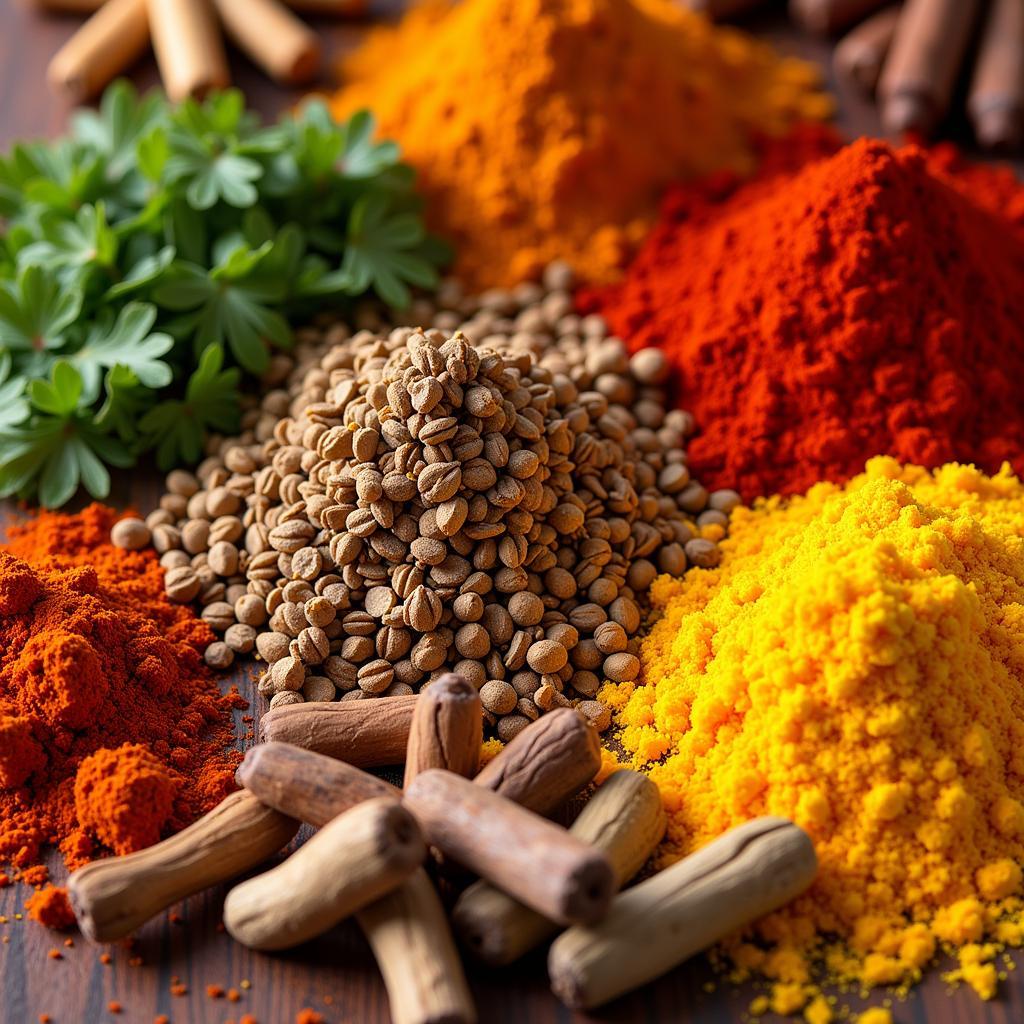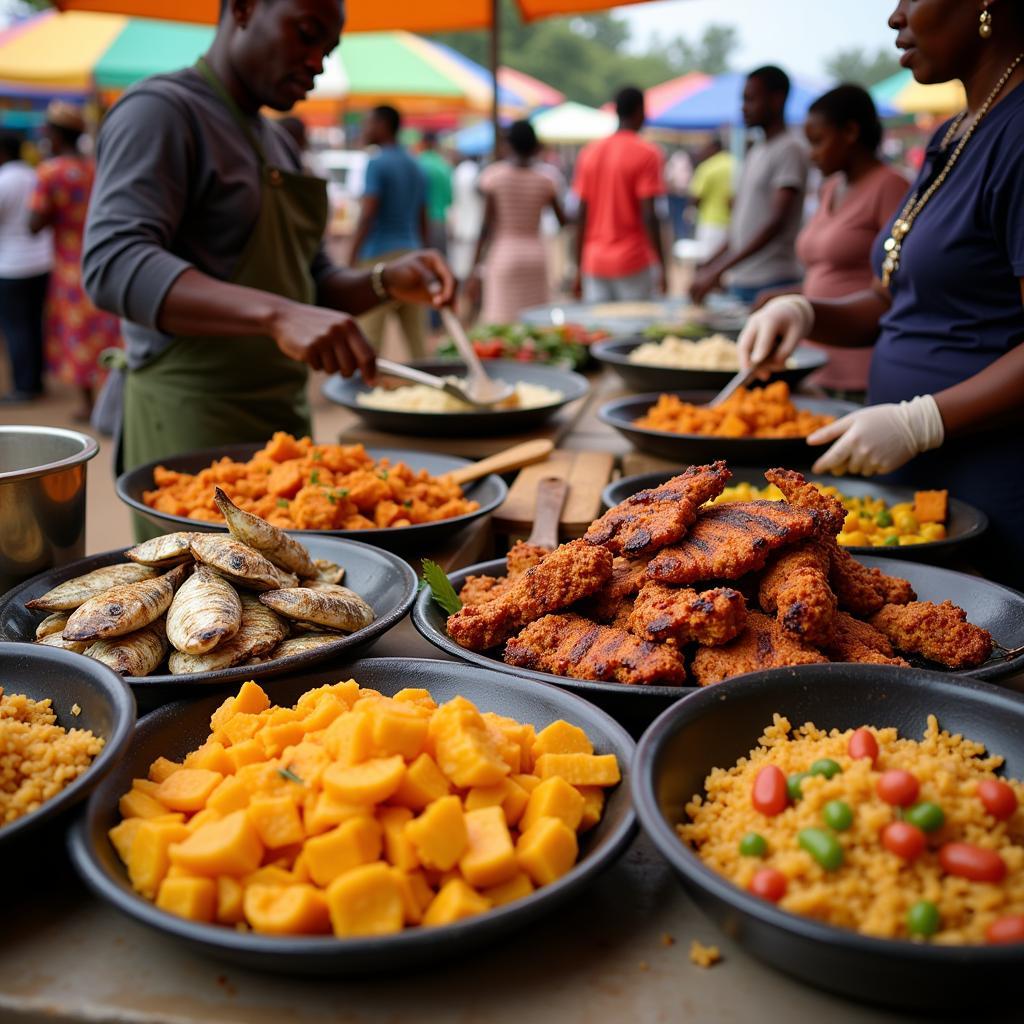Exploring the Diverse World of the African Kitchen
The African Kitchen is a vibrant tapestry woven from diverse cultures, traditions, and a deep-rooted connection to the land. It’s a world away from the bland, one-dimensional perception that often prevails. Embark on a culinary journey with us as we delve into the heart of the African kitchen, exploring its unique flavors, ingredients, and cooking techniques.
A Continent of Flavors: Debunking the Myths
One of the biggest misconceptions about the African kitchen is its supposed homogeneity. In reality, African cuisine is incredibly diverse, with each region boasting its own distinct culinary identity shaped by geography, climate, history, and cultural exchange.
North Africa: A Fusion of Mediterranean and Arabic Influences
The fragrant spices of Morocco, the rich tagines of Algeria, and the flavorful couscous of Tunisia speak to the strong Mediterranean and Arabic influences in North African cuisine. Think aromatic lamb dishes, preserved lemons, olives, dates, and the liberal use of spices like cumin, coriander, and saffron.
 Spices in North Africa
Spices in North Africa
West Africa: A Celebration of Hearty Staples and Bold Flavors
West Africa welcomes you with open arms and a plate full of flavor. This region is known for its hearty stews like peanut soup and fufu, a starchy side dish made from cassava, plantains, or yams. West African cuisine also features an abundance of seafood, particularly in coastal regions, often prepared with fiery scotch bonnet peppers and fragrant spices.
 West African Street Food Scene
West African Street Food Scene
East Africa: A Blend of Swahili, Indian, and Arabic Influences
East Africa offers a melting pot of flavors with influences from Swahili, Indian, and Arabic culinary traditions. Coconut milk is a staple in coastal areas, while inland cuisines feature an array of vegetables, legumes, and grains like maize and millet. Ugali, a stiff porridge made from maize flour, is a common accompaniment to stews and grilled meats.
Southern Africa: A Legacy of Indigenous Knowledge and European Influence
Southern Africa presents a diverse culinary landscape influenced by both indigenous knowledge and European colonization. Hearty stews, braised meats, and grilled dishes are common, often featuring ingredients like corn, beans, and root vegetables. Biltong, a form of dried, cured meat, is a beloved snack and a testament to the region’s history of food preservation.
The Essence of African Cooking: More Than Just a Meal
Beyond the ingredients and techniques, cooking in Africa is a communal experience, a celebration of shared heritage and cultural identity. Meals are often prepared and enjoyed together, strengthening bonds and fostering a sense of belonging.
Traditional Cooking Methods: From Open Fire to Tagine
The African kitchen utilizes diverse cooking methods, each imparting unique flavors and textures to the food. Open-fire cooking is common, with dishes cooked over wood or charcoal, infusing them with a smoky aroma. Tagines, earthenware pots with a conical lid, are used extensively in North Africa for slow-cooking stews and vegetables.
Key Ingredients: A Bounty from the Land
The African kitchen is characterized by its use of fresh, seasonal ingredients, many of which are sourced locally. Staple foods include grains like sorghum, millet, and maize; root vegetables like cassava, yams, and sweet potatoes; and legumes like beans, lentils, and peanuts. Fruits like mangoes, bananas, pineapples, and avocados add sweetness and vibrancy to dishes.
Exploring the African Kitchen: A Journey for the Senses
The African kitchen is an invitation to embark on a culinary adventure, to savor the diversity of flavors, and to appreciate the rich cultural heritage that permeates every dish.
Want to explore the vibrant flavors of Africa in Bangalore? Check out this African Kitchen in Bangalore. For a specific location, you might want to try African Kiychen Hennur.
From the fragrant spices of North Africa to the hearty stews of West Africa, the exotic flavors of East Africa, and the diverse culinary landscape of Southern Africa, the African kitchen offers a feast for the senses. It’s a testament to the continent’s rich history, cultural diversity, and profound connection to the land.
FAQs about African Cuisine
- What is the most popular food in Africa?
Due to the vastness and diversity of the continent, it’s difficult to pinpoint one single most popular food. However, some widely enjoyed dishes include Jollof Rice (West Africa), Nyama Choma (grilled meat, East Africa), and Bobotie (South Africa). - Is African food very spicy?
Spice levels vary greatly across different regions and dishes in Africa. While some cuisines, like West African, are known for their use of chili peppers, others use milder spices and herbs. - What are some common ingredients used in African cooking?
Common ingredients include grains like maize, millet, and sorghum; root vegetables such as cassava and yams; plantains; legumes like beans and peanuts; and a variety of spices and herbs.
Exploring Further
- Looking for a taste of African American comfort food? Check out this recipe for African American Chicken and Dumplings Recipe.
- Interested in unique African fruits? Explore the availability of African Berry Amazon Switzerland and African Berry Online India.
- Discover more about specific regional cuisines and dishes through online resources and cookbooks.
Embrace the richness and diversity of the African kitchen, and let your taste buds embark on an unforgettable culinary journey. For any assistance or guidance, please don’t hesitate to contact us. Our dedicated team is available 24/7 to assist you. Call us at +255768904061, email us at [email protected], or visit us at Mbarali DC Mawindi, Kangaga, Tanzania.
